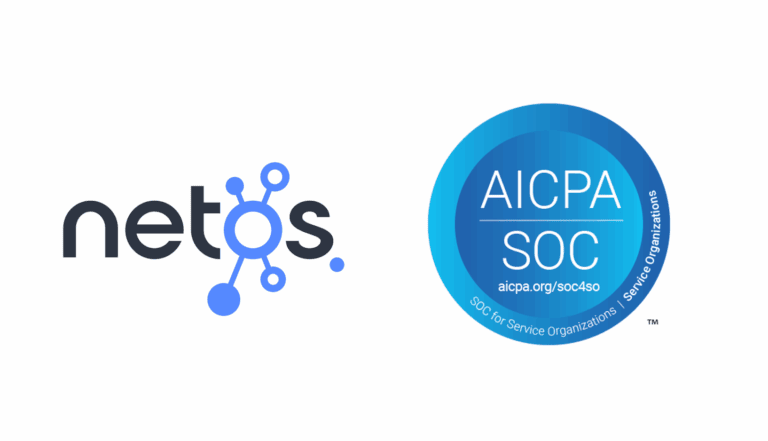Introduction
When we started building the Netos product suite, it became apparent that we needed a method for classifying network inventory data (infrastructure and telecoms) so we could generate useful management reports for IT, business, and finance.
Imagine an enterprise network with (tens of) thousands of devices, all with different roles, across different business units. How could we properly categorize these devices so we could easily report to the IT, Business, and Finance?
Then, with our infrastructure categorized, how could we align this to business units, functions, and services? Ultimately with a goal of….
What is TBM?
While researching how our schema could work, we stumbled across TBM. Sometimes you need some luck.
The TBM framework provides a comprehensive methodology for managing the business of IT. It offers a structured approach to understanding and optimizing the costs, performance, and value of technology investments.
An unintended consequence of finding TBM is that the TBM Council had validated a large part of the Netos business case. Networks have long been an outlier, and we further validated our assumptions by speaking to many Certified TBM Experts (CTBME’s) – thanks to all of you!
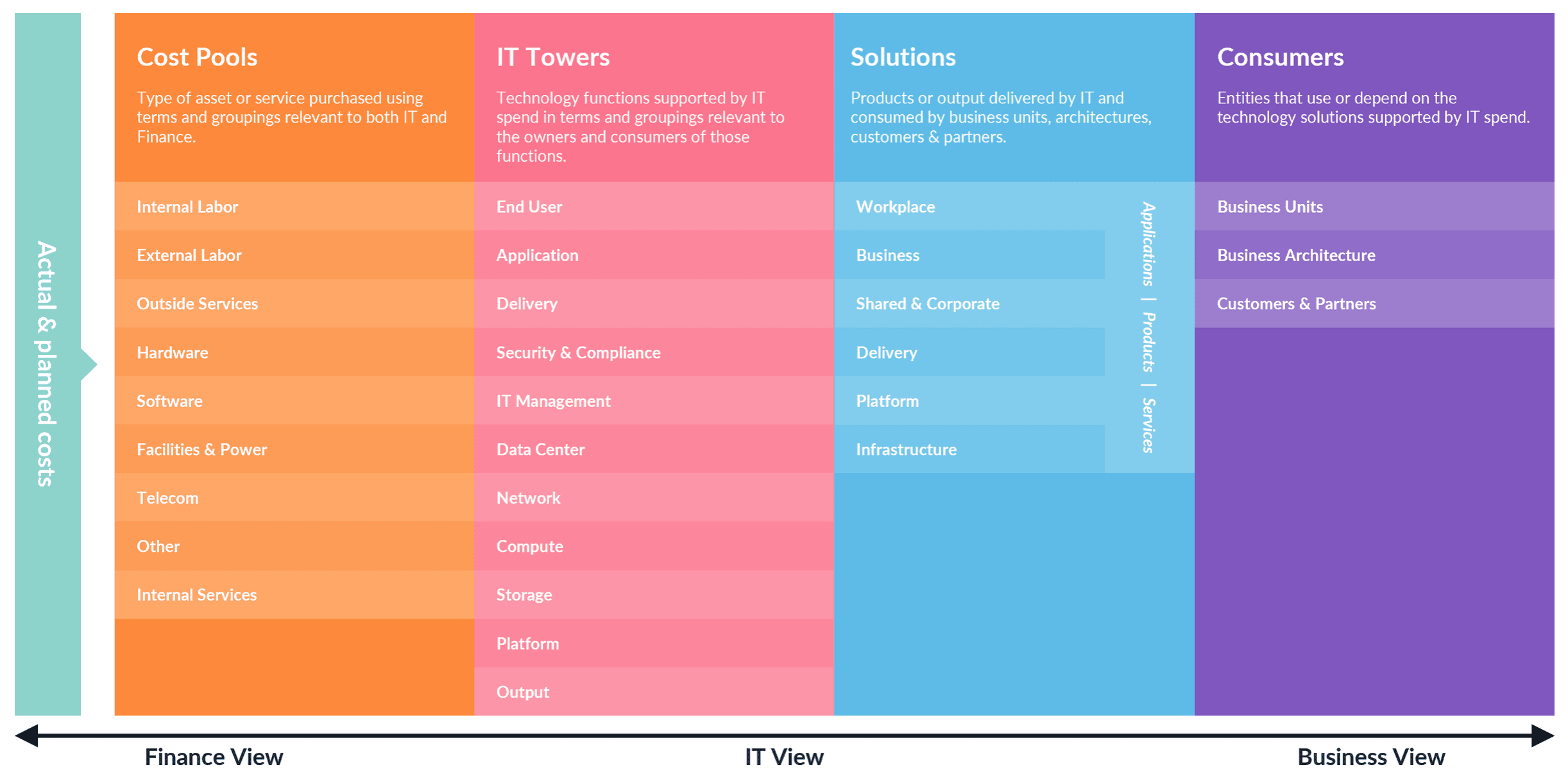
Source: TBM Council
We also realized that not only did TBM solve our immediate challenges, it also allowed us to align with an existing framework that many large organizations use.
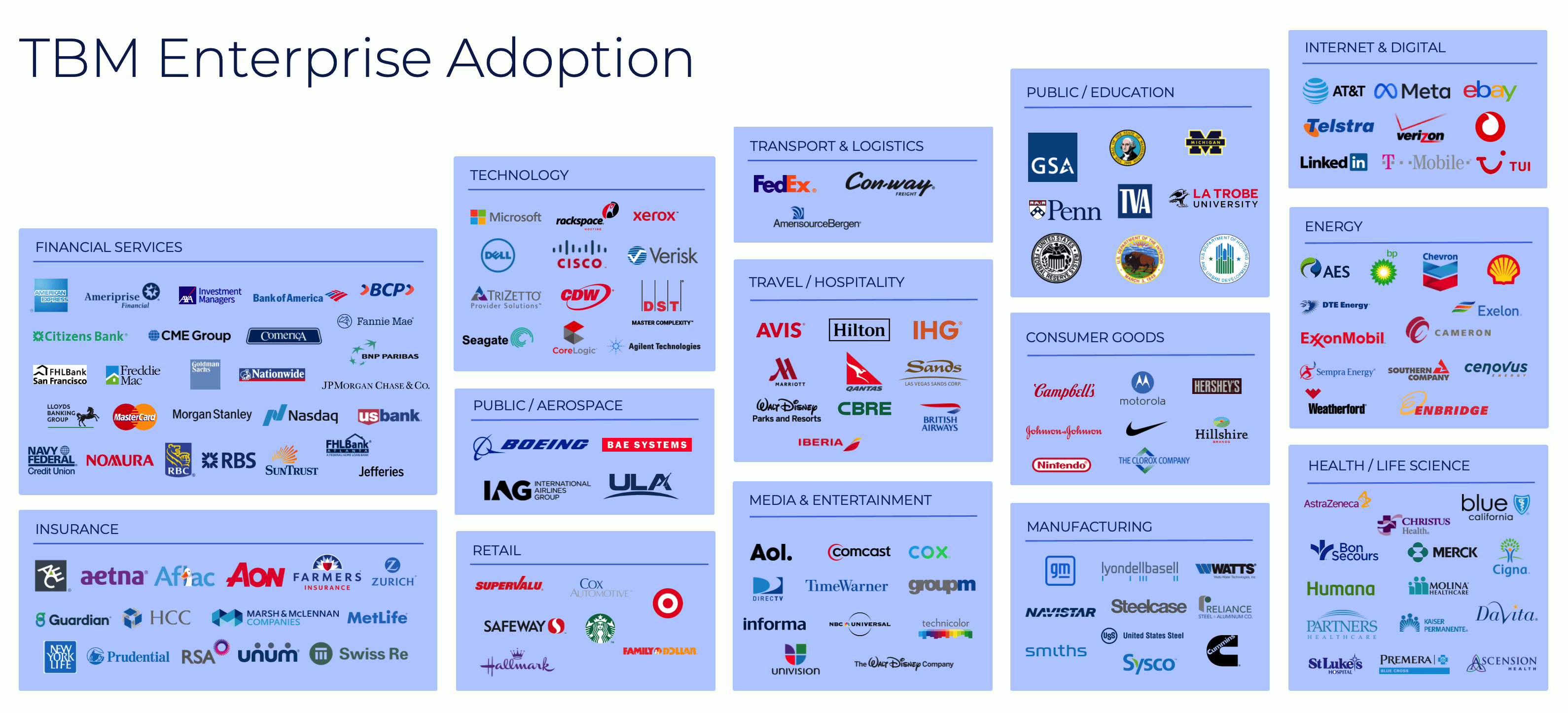
Applying TBM to Networks
TBMv4, the latest iteration of this framework, introduces a taxonomy that categorizes IT costs and resources into standardized categories, enabling better visibility, benchmarking, and decision-making.
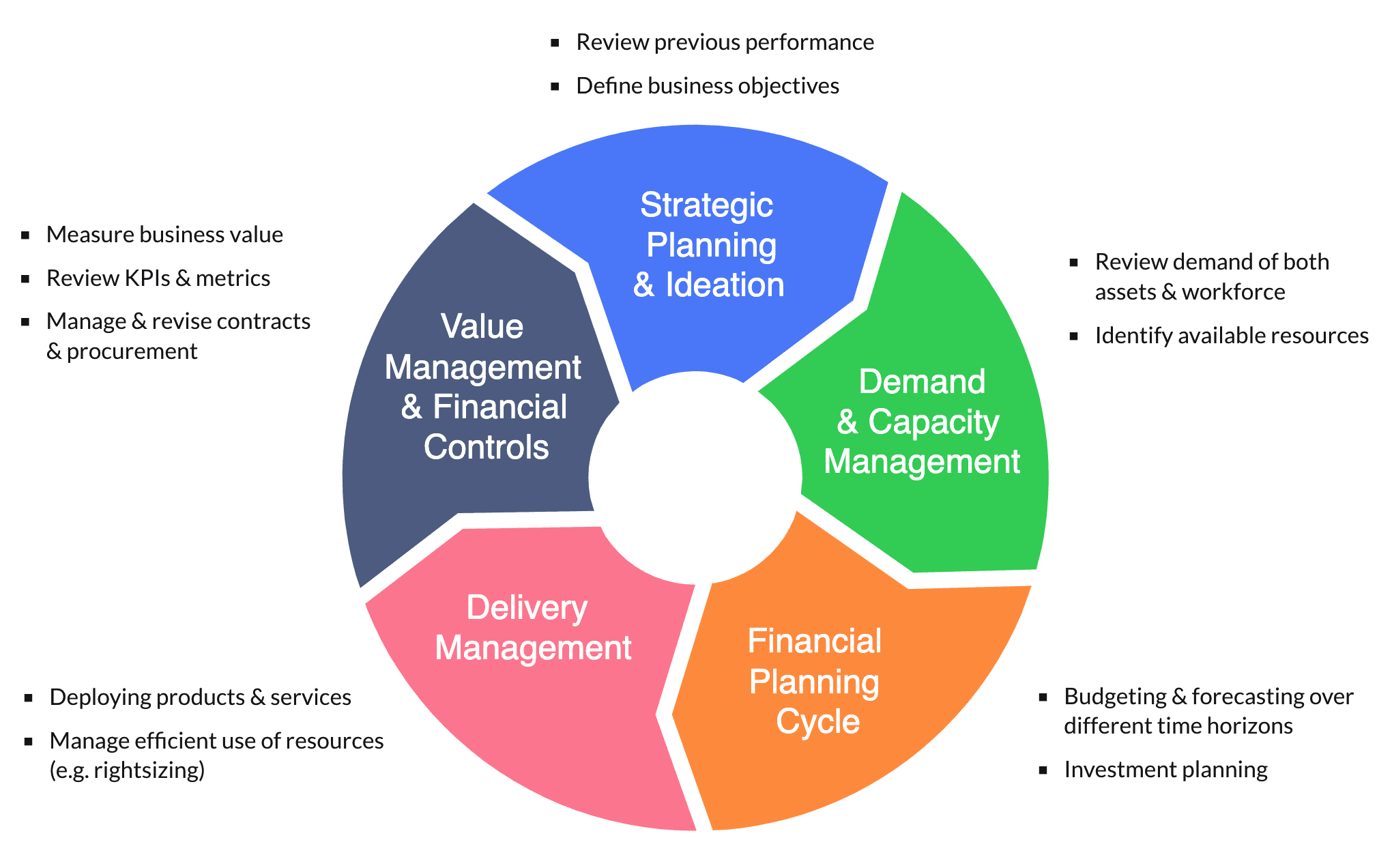
Source: TBM Council
Cost Transparency
By categorizing network expenses according to the TBMv4 Taxonomy, organizations can gain a clear understanding of where their money is being spent. This visibility allows for better cost allocation, budgeting, and optimization efforts.
Resource Optimization
By categorizing resources such as hardware, software, and services, organizations can pinpoint areas where resources are underutilized or overprovisioned. This insight enables them to reallocate resources more effectively, ensuring optimal performance at minimal cost.
Performance Benchmarking
TBM encourages benchmarking IT performance against industry standards and best practices. By categorizing network performance metrics according to the TBMv4 Taxonomy, organizations can compare their performance against peers and identify areas for improvement.
Value Demonstration
TBM emphasizes the need to demonstrate the value of IT investments to the business. By aligning network infrastructure costs with business outcomes, organizations can articulate the value that technology brings to the organization.
Whether it’s improving productivity, enhancing customer experience, or enabling innovation, TBM helps quantify the impact of network investments in terms that resonate with business stakeholders.
Cost Optimization
Ultimately, TBM aims to optimize IT costs while maximizing value delivery. By leveraging the insights gained from applying the TBMv4 Taxonomy to a network inventory, organizations can identify cost-saving opportunities within their network infrastructure.
Whether it’s renegotiating vendor contracts, consolidating resources, or adopting more efficient technologies, TBM provides a framework for making informed decisions that drive cost savings without sacrificing performance.
The netos TBM Strategy
Strategy
We decided to take a two pronged approach with TBM:
- Categorize Current State – Classify current infrastructure for reporting and modelling the current state.
- Model Future State – Within the Netos Model Builder carry through TBM classifications and allow users to set new ones, so the projects were TBM friendly.
Extending the Schema
The TBM Taxonomy is well documented, and you can download the documents here. The question was how we would take this and apply it to data in Netos. In addition to the Tower, Cost Pool, and Solution schemas, we added additional tables into Netos:
- Cost Template – Allows us to link costs and contract termination dates to TBM categories.
Building on NetBox
Building on NetBox
NetBox is a widely adopted open-source IT Asset Management tool. It made sense for Netos to align with this proven base framework, so we can slot into the thousands of organizations already using NetBox.
Building on NetBox
Firstly we incorporated the TBMv4 Taxonomy, and extended with Cost Templates and Business Lines.
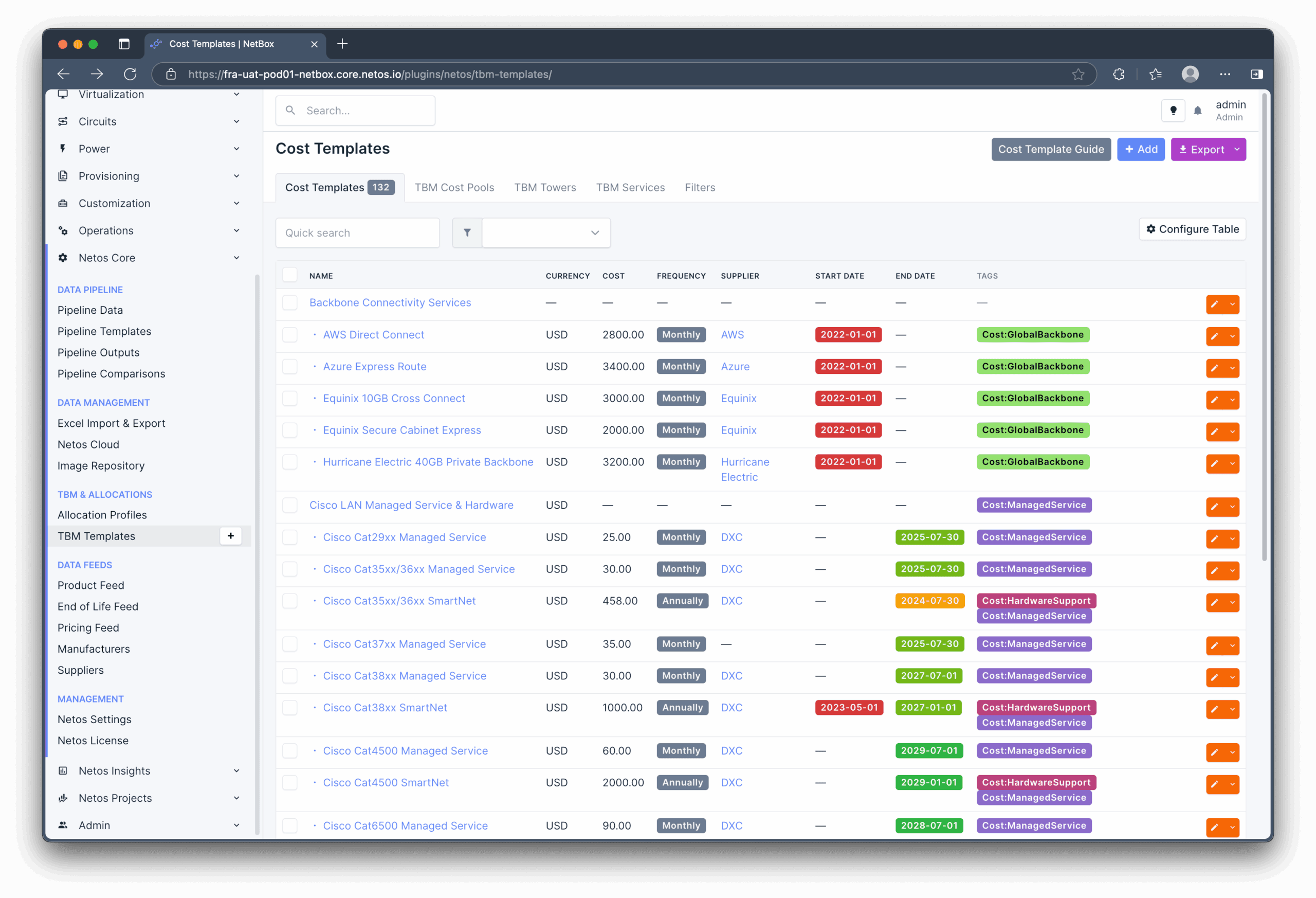
Building on NetBox
We then build multiple layers of reports and external data feeds, so any stakeholder can quickly get a view of the network in a view that makes sense to them.
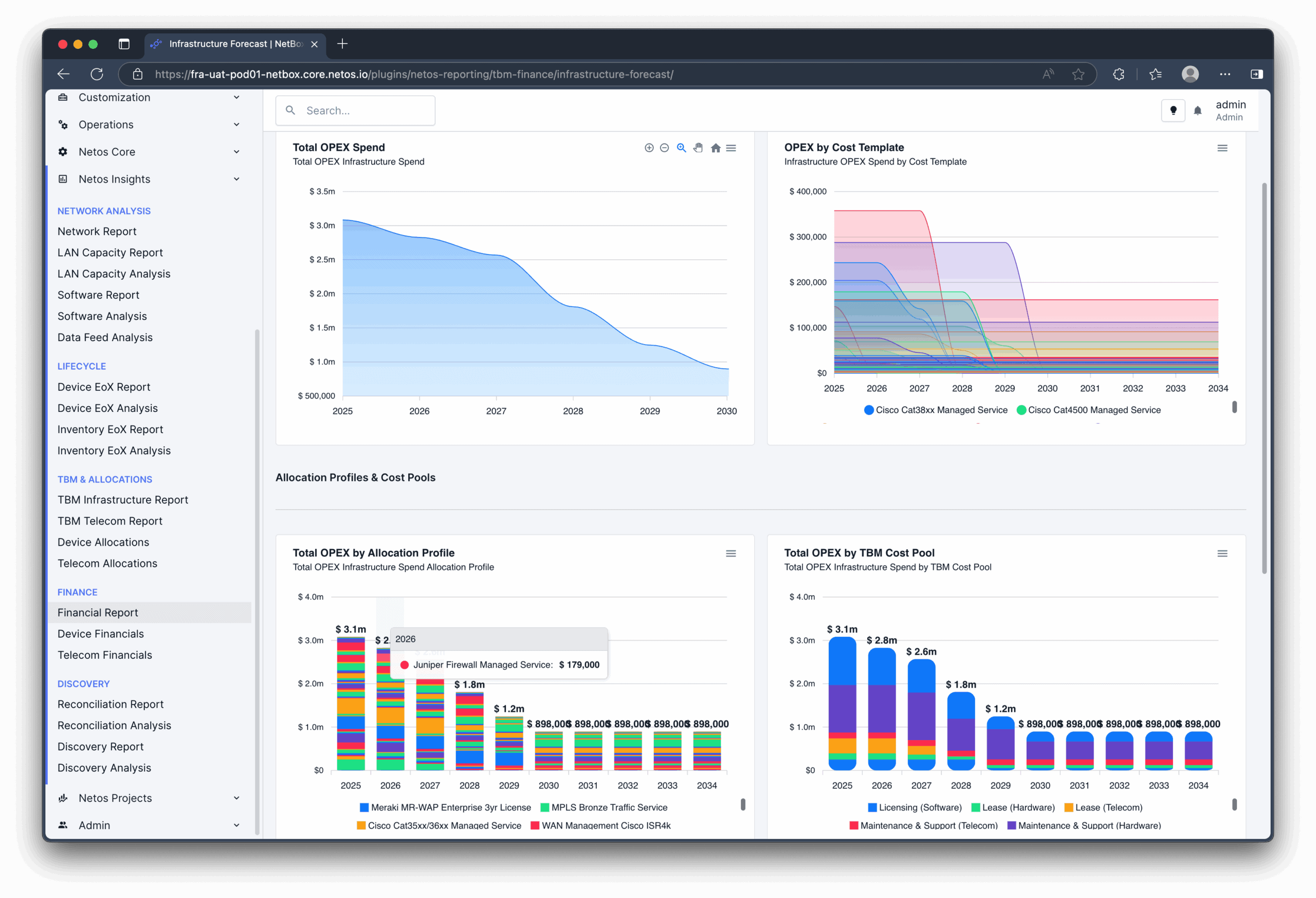
Unlocking Value
With TBM implemented throughout the Netos product suite, we can categorize network infrastructure and telecoms to support day-to-day operations, as well as forward planning.


